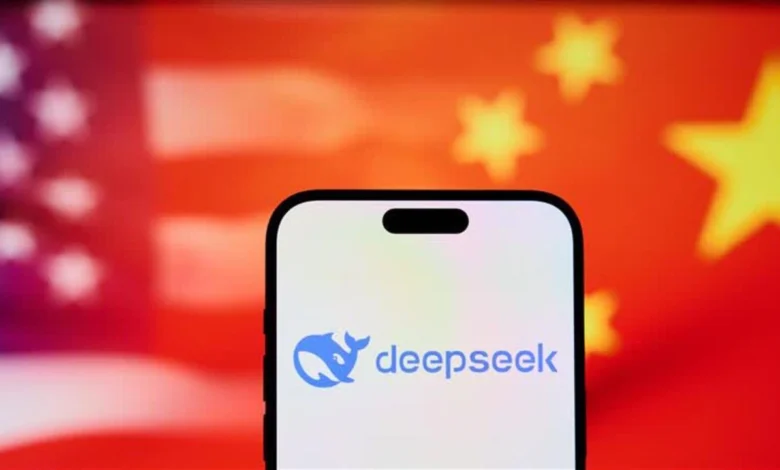
A Critical Examination of China’s Newest AI Challenger
The emergence of DeepSeek, a Chinese artificial intelligence (AI) startup, has sent shockwaves through the AI industry, particularly among American tech giants. With claims of groundbreaking efficiency and cost-effectiveness, DeepSeek presents itself as a formidable challenger to OpenAI and other Western AI developers. However, given China’s history with intellectual property (IP theft), state-controlled technology, and opaque reporting, it is crucial to approach this announcement with a critical perspective.
DeepSeek, founded in 2023 by Liang Wenfeng, operates under High-Flyer, a hedge fund known for its AI-driven trading strategies. Its flagship model, DeepSeek-R1, was reportedly trained using approximately 2,048 Nvidia H800 GPUs over 55 days, at a cost of around $5.6 million—a fraction of the resources typically used by Western counterparts. According to DeepSeek’s claims, this model rivals OpenAI’s GPT-4 in areas such as mathematics, coding, and natural language reasoning. However, while the technology itself may indeed be impressive, there are strong reasons to doubt the full accuracy of the company’s statements and consider the broader implications of this development.
Intellectual Property Concerns
China has a long and well-documented history of intellectual property theft, particularly in the technology sector. A notable case involved a Chinese national arrested in California for allegedly stealing over 500 confidential AI-related files from Google. (Justice Department) DeepSeek’s claims of rapid development and cost reduction immediately raise suspicions that they may have relied on proprietary data or models from OpenAI, Microsoft, or other Western tech companies.
In fact, recent reports suggest that DeepSeek may have illicitly obtained training data from OpenAI, prompting investigations by both OpenAI and Microsoft. (The Times) If these allegations prove true, it would not be surprising. China’s AI sector has been built, in part, by acquiring foreign technology—sometimes through legal partnerships, but often through cyber espionage and IP theft.
This raises a key question: Are DeepSeek’s claims of efficiency and cost-effectiveness based on true innovation, or have they simply bypassed years of costly research and development by using stolen AI blueprints? If the latter, then this isn’t a technological breakthrough—it’s a strategic escalation in the ongoing battle for AI dominance.
Market Impact and the NVIDIA Monopoly
The release of DeepSeek-R1 has already sent ripples through financial markets, triggering a significant selloff in AI-related stocks. Companies like Nvidia, which currently dominates the AI hardware sector, saw substantial declines in market value as investors worried about potential disruption from China’s AI sector.
This brings us to an often-overlooked reality: Nvidia holds a near-monopoly on the GPUs that power all modern AI models. Estimates suggest that Nvidia controls over 80% of the AI infrastructure market. (National CIO Review) This dominance places it in a position similar to that of oil companies in the past—controlling the key resource needed for an industry’s growth. Just as oil companies resisted the widespread adoption of electric vehicles to maintain their profitability, Nvidia has little incentive to encourage alternative AI computing methods when it can continue profiting from its GPU monopoly.
It is entirely possible that American AI companies already possess the ability to train AI models on less expensive, lower-powered GPUs but choose not to because it would disrupt Nvidia’s business model. Nvidia has no reason to invest in reducing computing costs when its entire business is built on selling powerful, high-margin chips.
This raises a related concern about DeepSeek: While China claims to have built its model with dramatically lower resource usage, is it possible that they are using Nvidia GPUs that they are not supposed to have access to? Given U.S. sanctions restricting China’s access to high-end Nvidia hardware, how exactly did DeepSeek acquire and utilize these GPUs? There is a real possibility that they are exaggerating their efficiency claims—or worse, illegally obtaining restricted hardware.
Resource Consumption and Environmental Impact
AI training doesn’t just require massive amounts of computing power—it also consumes enormous amounts of water. Data centers use water for cooling, and as AI adoption increases, so does the environmental strain. Training large AI models like GPT-4 or DeepSeek-R1 requires cooling systems that collectively consume millions of gallons of water. (Wikipedia)
Years ago, analysts warned that water would become the most valuable and scarce resource of the future. Many billionaires quietly began buying and privatizing water sources, and now we are seeing the consequences of unchecked AI expansion exacerbating water scarcity. The issue is not just about computing efficiency but about sustainability—how long can we afford to continue expanding AI without addressing the environmental costs?
DeepSeek’s claims of lower resource consumption would be a positive development if true, but the lack of transparency from China makes it difficult to verify. If the West had a similar model that used fewer resources, it would be an ethical imperative to release it.
Censorship, Security, and the Ethical Dilemma of AI Development
One of the major concerns with DeepSeek—and Chinese AI in general—is the issue of censorship and government control. Reports indicate that DeepSeek’s model exhibits selective censorship on politically sensitive topics, avoiding discussions of subjects like the 1989 Tiananmen Square protests, human rights abuses, and Taiwan’s political status. (The Guardian)
This censorship is not just a quirk of the model—it is a fundamental feature of how China develops technology. The Chinese Communist Party maintains tight control over all major tech companies, ensuring that any AI system developed within China adheres to the government’s ideological and geopolitical agenda.
At the same time, American AI companies are not exactly paragons of ethical conduct either. The current approach to AI development in the U.S. is dominated by profit-driven corporations with no meaningful oversight. OpenAI, for example, started as a nonprofit but quickly transformed into a for-profit entity beholden to investors.
An ethical alternative would be for the West to release an AI model comparable to DeepSeek that requires far fewer resources to operate—one that allows users to choose between high-end AI models and more efficient alternatives based on their needs. This would provide competition while reducing wasteful computing practices. However, as discussed earlier, companies like Nvidia have no financial incentive to pursue such alternatives when they can continue selling high-powered GPUs at premium prices.
The Real AI War Is About Control, Not Innovation
DeepSeek’s emergence presents a fascinating challenge to American AI companies. If China has truly developed a model that performs as well as GPT-4 at a fraction of the cost, then the West must address why its AI models remain so resource-intensive. But this does not mean we should take DeepSeek’s claims at face value—China has every reason to exaggerate its technological prowess, just as it has done in other industries.
At the heart of this issue is the question of control. China’s government wants to control the future of AI, while American tech companies want to monopolize AI for profit. Neither of these approaches is in the best interest of the average person. The ethical approach would be to develop AI models that are both powerful and efficient while respecting user privacy, intellectual property, and environmental sustainability.
Unfortunately, until there is a radical shift in priorities, AI development will continue to be dictated by national security concerns, corporate greed, and geopolitical power struggles—rather than what is best for humanity.
Lauren Davidson-Ibarra | Substack





Hi, this is a comment.
To get started with moderating, editing, and deleting comments, please visit the Comments screen in the dashboard.